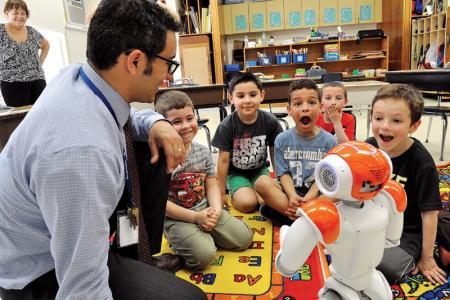
The intervention was designed for teachers of preschool-aged children and focused on fostering close teacher-child relationships through one-on-one play. Children who participated in the intervention showed reduced levels of the hormone cortisol, an indicator of stress, said Bridget Hatfield, an assistant professor in Oregon State University’s College of Public Health and Human Sciences and lead author of the study, oregonstate.edu wrote.
Researchers believe it is the first time a study has examined the relationship between a teacher-child intervention and a child’s cortisol levels in an early childhood education setting.
The findings highlight the importance of the relationship between child and teacher, and underscore the value of warm and caring interactions, including one-on-one play time between a child and his or her teacher, Hatfield said.
“The big message here is that positive relationships between teachers and students matter,” she said. “What a teacher does in the classroom, the way they behave, their positivity and supportiveness, has an enormous impact on the children and their health.”
The findings were published recently in the journal Prevention Science. The coauthor of the paper is Amanda Williford of the University of Virginia. The research was supported in part by grants from the US Department of Education’s Institute of Education Sciences and the American Psychological Association.
About 61 percent of children under the age of five spend time in formal childcare and education settings such as preschool. Past research has shown that this setting may increase children’s stress, which in turn can lead to disruptive classroom behavior.
Children who have frustrating or difficult relationships with their teachers also have shown decreased academic success in kindergarten and their challenging behaviors may increase in intensity as they get older.
“If a child can’t develop a healthy stress response system in early childhood, it limits their ability to develop strong school-readiness skills,” Hatfield said. “That’s why these early teacher-child relationships are so important.”
Hatfield and Williford wanted to see if an intervention designed to improve child-teacher interactions could reduce stress levels in children with challenging behaviors.
In all, 70 teachers and 113 children participated in the study. They were divided into three groups: one group was designated as ‘business as usual’ and the children did not participate in any special activities; one group participated in a ‘child time’ intervention; and one group participated in an intervention called ‘Banking Time’.
In the child time intervention, the child and teacher spent time playing one-on-one but the teacher was not given any specific guidance or instructions from a consultant for the play period.
Banking Time is a much more formal intervention, designed to foster sensitive, responsive interactions between a teacher and a child, creating a relationship the child and teacher can use as a resource during times of challenge in the classroom.
